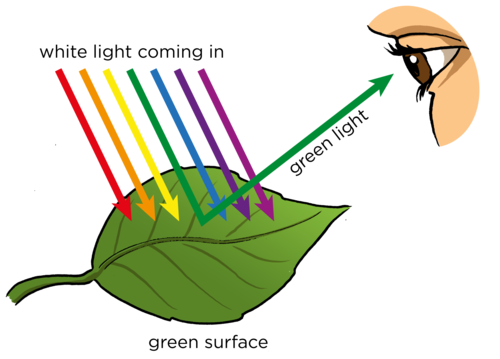Most plants have green leaves.
Leaves are colored by molecules called pigments.
The pigment that causes leaves to be green is chlorophyll.
A pigment is a substance that absorbs light. The chlorophyll is a pigment that absorbs blue and red light. So then why is it green?
It is because the chlorophyll reflects the green colour.
There are other pigments that gives some other colours to the leaves.
They are
Carotenoids are yellow and orange.
Anthocyanins are responsible for red, purple, blue colours.
Do the variegated leaves of a croton plant have chlorophyll?
The leaves of crotons too have chlorophyll. But the green color is hidden by the pigments of other colors like red or purple, etc.

Plants are the primary producers. They prepare their own food by the process of Photosynthesis.
The cell organelle that helps plant to prepare its own food is the chloroplast that has the green pigment chlorophyll.
The green leaves of the plants are the kitchen of the plant.

The process of Photosynthesis captures the energy from visible light but it doesn’t use all of the colors of light equally.
It mostly uses light from the blue and red parts of the spectrum.
Chlorophyll absorbs red and blue light.

Very good information.